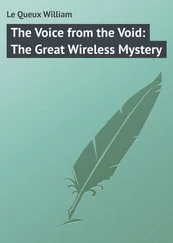
It would perhaps be putting it too strongly to say that Rector Ole Worm, Doctor Medicinæ in Academia Hafniensi Professor Regius, had been wrong about the existence of the unicorn. In fact, he had for some time been assailed by doubts about the origin and nature of these marvellous horns. He had begun to wonder why so few people had actually set eyes on the beast in modern times; the most recent eyewitness accounts were all over a hundred years old, and there was moreover the conundrum of why nothing was ever found of their bodies apart from the horn. No one doubted the unicorn’s noble nature; it was the touchstone of piety and chastity, as was proved by the fact that only young virgins could tame its savagery, an encounter between ferocity and gentleness that had been depicted in countless paintings, drawings, jewels and wall hangings. But all the works of art that Worm had examined had one thing in common: judging by the length of the horns that he himself had measured and weighed, the unicorn was always portrayed as too small. The simple experiment of binding an accurate replica of a unicorn horn to a billy goat had proved that to carry a lengthy, twenty-pound horn would require more than just a ferocious nature: the horn would have to sprout from a broad forehead on a large head that sat in turn on a much bulkier body than anyone had ever envisaged, a fact that made the beast’s invisibility even harder to explain. Worm began to make enquiries about the origins of the horns that were known to exist in the treasuries of cathedrals and palaces. It transpired that, with the exception of the unicorn horn encased in the sceptre of Elizabeth I, the Virgin Queen of England — which she had bought from a Muscovy trader for the price of a castle — the horns were all found in places where Icelanders had studied or traded, or merely stopped for a breather on their journeys to Rome or Jerusalem. The Flemish polymath Goropius Becanus, for example, claimed that the three horns he had examined in Antwerp in the middle of the sixteenth century had all come from Iceland, and Worm was aware that before the introduction of Lutheranism to Iceland, the leading men in that country had been in the habit of sending their sons to Antwerp to study the art of business.
The learned doctor was thrilled by this news, for he had confidants on the volcanic island, old colleagues and students from the University of Copenhagen, who would be able to confirm whether their inclement homeland fostered other land animals besides field mice and Arctic foxes; whether it was possible that unicorns trod the black sand wastes to the accompaniment of rumbling volcanoes and glaciers, and, if not, whether this ivory was found among the other flotsam and jetsam from distant lands that was washed ashore on Iceland’s strands. But his old acquaintances could provide little in the way of answers. They thought it unlikely that such treasures were to be found in Iceland, at least they had never set eyes on them, and despite their repeated promises to ask this or that old fellow with a long memory, when their correspondent reminded them of the matter some months later, they had invariably forgotten all about it. In spite of the countless letters he had sent, he remained none the wiser about the possible export of unicorn horns from the colony in the north. But in addition to his importuning of Icelandic bishops, clerics and squires — his contacts were all pillars of society — Ole Worm had received permission from the Danish chancellery to perform a chemical analysis on one of the two horns in the possession of the realm. He conducted these experiments in secret as he did not wish to offend his brother-in-law and mentor, Professor Caspar Bartholinus, who in 1628 had published the book De Unicorno in which he proclaimed the healing powers of the horns which, due to their mysterious origin, were considered an efficacious remedy for epilepsy, melancholy, cramp, gout and other disorders, in addition to being an infallible antidote against snake bites and earthly poisons such as arsenic and sublimate. Various methods were used to administer the medicine, but the most common was to scrape the horn with a sharp knife and mix the resulting powder with wine which was then given to the patient to drink. In addition, it was not unknown for the thickest section at the base of the horn to be made into a cup, whose virtue was such that any unadulterated liquid poured into it would instantly be transformed into a healing draught, whereas if the drink was poisoned, a sweat would appear on the cup’s outer rim. But these precious objects were only within the means of the rich and powerful who were, after all, always falling victim to poison. Ole Worm decided to conduct experiments on these properties: in a back room belonging to the apothecary Woldenberg, he gave healthy kittens arsenic to drink until they began to stagger and bleed from their mouths and nostrils, upon which they were administered unicorn’s horn ground up in milk. They all died, as did the pigeons fed on corn soaked in chloride of mercury. But what the ever-curious Wormius did learn from his experiments with the horns was that in their internal structure and substance they resembled ivory rather than rhinoceros horn. His researches progressed no further until Jónas Pálmason the Learned set eyes on the royal treasure, a unicorn’s horn set in a fragment of skull, and sank to the floor, overcome with hilarity.
Once Jónas and Worm had recovered from their laughter and refreshed themselves with blackcurrant juice (good for the kidneys) and spiced loaf (good for the bowels), it became apparent that Jónas was no less accomplished a natural historian than he was a runic scholar, and an experienced ivory-smith into the bargain, who had been engraving pictures on whale ivory and walrus tusks ever since he was young. He revealed that the object wrapped in velvet, far from being what it purported to be, was the tusk of the savage whale known as the narwhal, or ‘corpse whale’ because of its taste for drowned sailors, and Worm duly recorded the object in his workbook as ‘Narwhal’s Tusk’. The Icelanders had first encountered these horrid beasts when they founded a colony in Greenland around the year 1000 Anno Domini and soon began to export the tusks, labelling them as ‘unicorn horns’ according to the latest fashion. The Greenlanders and their middlemen in west Iceland grew fat on the profits of this secret commerce, which ensured the Greenlandic colony an advantageous balance of trade with foreign lands as well as laying the foundation for the wealth of the most powerful families in Iceland. The trade continued uninterrupted until the Greenlandic colony was abandoned a hundred years ago, in the year of Our Lord 1540. Narwhal tusks were now a rare commodity in the country, but people could expect to get a high price for them as long as belief in the existence of the unicorn persisted, so Dr Worm must promise not to tell his correspondents in Iceland who had spilt the beans. This promise was easily extracted. Jónas drew diagrams for Worm showing how the fish lay in the sea, wielding its tusk like a lance, and a comparison of these with the royal specimen convinced Worm that it was a narwhal skull with a tusk and nothing more. And so that day in the Museum Wormianum the unicorn’s fate was sealed: a year after his meeting with Jónas Pálmason, Ole Worm published an epoch-making article on the similarity between narwhal tusks and unicorn horns. For the next three decades the brightest luminaries of Western philosophy wrangled over the existence of the fantastic horned beast with the goat’s beard, horse’s abdomen, pig’s tail, antelope’s head and elephant’s feet, until the sceptics finally prevailed. Upon which the price of unicorn horns plummeted. This result was a remote but sweet revenge for Jónas the Learned, since many of his chief persecutors in Iceland were descended from unicorn merchants.
Читать дальше













